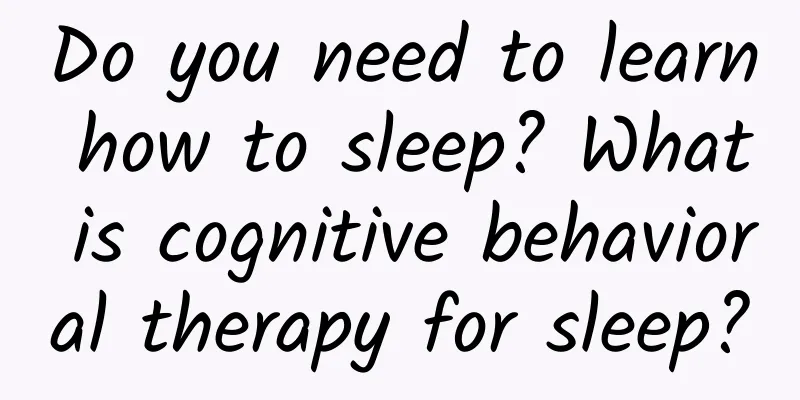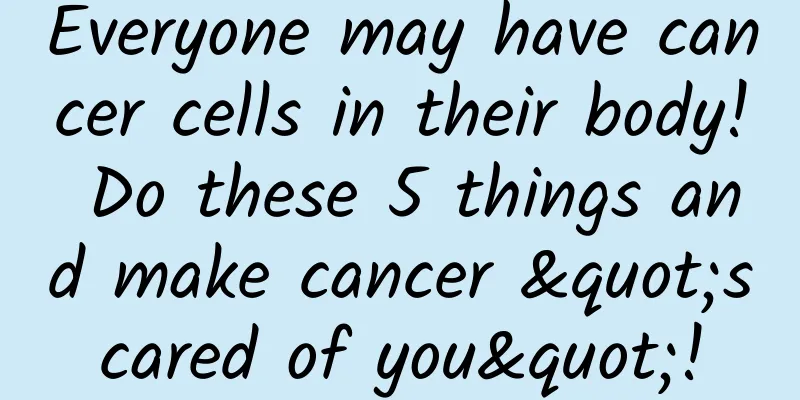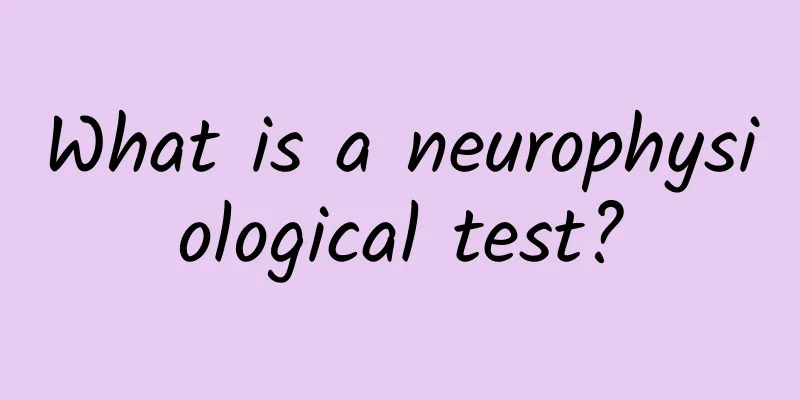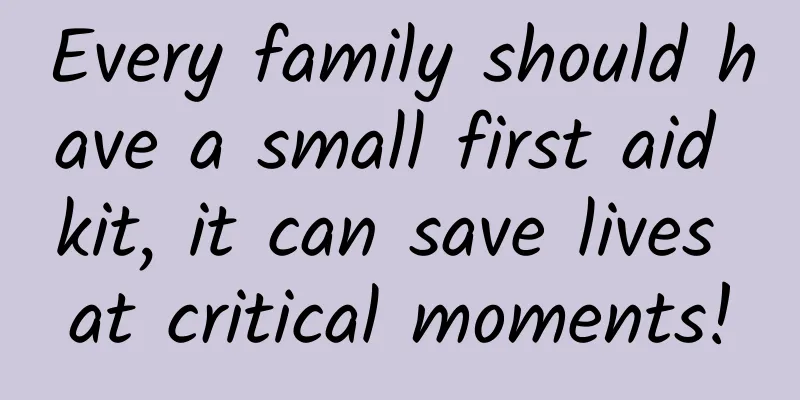Do you need to learn how to sleep? What is cognitive behavioral therapy for sleep?

|
In recent years, the proportion of people with sleep disorders in my country has continued to rise, especially after the COVID-19 pandemic, the number of people who go to the hospital for treatment with sleep problems as the main complaint has increased sharply. I believe everyone has similar experiences. Neighbors often mention when chatting: "My daughter is taking the college entrance examination this year. She has been suffering from insomnia every day in recent months. It is really heartbreaking to see the dark circles under her eyes"; "My little kid doesn't go to bed until after 10 o'clock in the evening. I finally turn off the lights and lie on the bed, but he plays with his hands and feet, knocks here and touches there, and just doesn't sleep well"; "Since I was infected with the new coronavirus, I can't sleep almost every day in the past two years"; "I really want to take a training class to learn how to sleep"... The question is, isn't sleeping something that everyone does every day? Why do we need to learn it? The answer is yes. Recently, patients often ask me questions like "Doctor, will my sleep problems recur after being cured by you this time? How long will the effect of your treatment last?" As a clinician, to be honest, both questions are difficult to answer. For the first question, if you directly answer yes, it will undermine the patient's compliance and affect the treatment effect. If you answer no, it is obviously self-deception. For the second question, I need to remind the general public: Insomnia, especially intractable insomnia, is not formed in a day or two, and there is no shortcut to treatment. In order to cure insomnia, in addition to scientific treatment methods, it is crucial to correctly understand sleep, learn self-discipline, and adopt correct behavioral methods to correct it! In other words: stable insomnia treatment requires: scientific therapy + self-discipline + cognitive behavioral correction. For most people, after systematic treatment in the hospital and improved sleep quality, if there are behaviors that are not friendly to sleep in daily life, the possibility of insomnia recurring is very high; on the contrary, if you develop good work and rest habits from the beginning of insomnia treatment and learn to use scientific and effective cognitive behavioral therapy, it will help improve long-term efficacy. Cognitive behavioral therapy for insomnia (CBT-I) is the preferred treatment for insomnia recommended by the "Guidelines for the Diagnosis and Treatment of Insomnia Disorders in China". Its core is to help people identify and change their negative cognition and sleeping habits, break the original wrong thinking patterns, and rebuild a good sleep rhythm, so that patients can reduce or even stop taking medication. It is a sustainable and very cost-effective non-drug therapy. Studies have shown that the correct use of cognitive behavioral therapy can effectively improve and consolidate the long-term treatment effect of refractory insomnia. However, most people don’t know much about sleep-related cognitive behavioral therapy. Therefore, if you want to have a healthy and satisfying sleep, you really need to learn! To treat insomnia with cognitive behavioral methods, you first need to change the irrational beliefs and maladaptive behaviors about sleep caused by long-term lack of sleep, that is, to take a two-pronged approach from the individual’s “cognition” and “behavior”. Cognitive therapy Regarding sleep cognition, common sleep-related problems mainly include:
1. Maintain realistic expectations about sleep and don’t rush to return to normal. 2. Don’t blame insomnia for impaired daytime function. 3. Don’t take sleep too seriously and don’t try too hard to fall asleep. 4. Allow yourself to have insomnia sometimes, and don’t be upset about not sleeping well occasionally. Of course, the above few sentences are far from enough. After all, most people cannot make significant changes in their thinking in a short period of time. Therefore, cognitive sleep therapy is a gradual process that takes an average of 6-8 weeks . By increasing the understanding of sleep and realizing that sleep itself is fluctuating, it is not surprising that healthy people occasionally suffer from insomnia. Even if they suffer from insomnia frequently, it is acceptable as long as it does not significantly affect their daily study or work . Only in this way can we fundamentally break the vicious cycle of anxiety caused by insomnia, and the more anxious they are, the more insomnia they suffer. Behavioral therapy <br /> Currently, there are many methods for behavioral treatment of sleep. Through online searches, you can easily get detailed introductions to hundreds of behavioral therapies, such as sleep deprivation, stimulus control, mindfulness therapy, relaxation therapy, exercise therapy, drinking milk, foot bathing, etc. Some therapies are very simple and suitable for all ages, but the efficiency is not high (such as music therapy, which is a disaster for people who need a quiet environment to fall asleep); some therapies are very effective, but difficult to implement, and even have certain risks (such as hypoxia and breath holding therapy). Each behavioral therapy has its reasonable explanation, but it is not necessarily suitable for everyone, or each therapy is only suitable for certain specific groups of people. Among these massive behavioral therapies, the author recommends several relatively reliable methods for everyone through screening and comparison. 1. Sleep restriction therapy People with sleep disorders often have a similar sleep tendency, that is, they believe that increasing the time in bed can effectively increase the chance of falling asleep. In fact, this may lead to fragmented sleep and low-quality sleep. Sleep restriction therapy is to use a one-week sleep diary to calculate your average daily sleep time, judge the sleep efficiency based on this statistical time, and then restrict sleep. This therapy requires a week of sleep records. The average sleep time of this week is the total time in bed every day in the second week. Sleep restriction is based on a cycle of 1 week. At the end of 1 week, the sleep efficiency needs to be calculated. Calculation of sleep efficiency: Assuming that the total time asleep in one week is recorded as T1, and the total time sleeping with eyes closed is T2, then sleep efficiency = (T1/T2)*100%. (1) When sleep efficiency is lower than 85%, directly reduce the total time in bed by 20-30 minutes in the next week and continue to do so for another week. Then judge the sleep efficiency again after the third week. (2) When the sleep efficiency is equal to 85%, keep the bed rest time unchanged and continue to judge the sleep efficiency after one week. (3) When the sleep efficiency is higher than 85%, increase the time in bed by 20-30 minutes. Continue to do this for one week before judging the sleep efficiency again. shortcoming: (1) It is often difficult to accurately judge the duration of sleep. Many people cannot estimate the time it takes them to fall asleep, which leads to an inability to accurately calculate it. If you calculate the sleep time before going to bed, it is more likely to cause insomnia. (2) If sleep efficiency is too low, it will cause the patient to feel depressed and increase anxiety. (3) For most people, this method is difficult to stick to for a long time. 2. Stimulus control therapy Stimulus control therapy is an important part of cognitive behavioral therapy for insomnia and is recommended for the treatment of difficulty falling asleep and waking up easily. Stimulus control limits the time spent in bed and the behavior of staying in the bedroom or bed when awake. The goal is to strengthen the connection between the bed/bedroom/bedtime and quick and stable sleep, and reconnect to establish a new conditioned reflex process, which mainly includes the following points: (1) Go to bed only when you are sleepy. (2) Do not engage in activities unrelated to sleep in bed, such as looking at mobile phones. (3) Leaving the bed if you are unable to fall asleep after more than 20 minutes or if you have not been able to fall asleep again after waking up for more than 20 minutes. (4) Go to bed only when you feel sleepy again. Disadvantages: It has high requirements for housing and is difficult to implement in the long term.
There are many types of relaxation therapy, including muscle relaxation and mental relaxation, which can reduce brain arousal and relax the body and mind muscles, but it takes a long time to be effective. "If you want to fall asleep too much, you will not fall asleep", which means that the mind is not relaxed enough. At this time, you need to cultivate the mentality of "it doesn't matter if you fall asleep or not". It is often easy to enter this state when you let nature take its course and have no desires or demands. In addition, hypnotherapy, reducing nap time (try to keep naps within 30 minutes, regardless of whether you fall asleep or not, and no longer than 1 hour), choosing a quiet and well-lit environment, and wearing eye masks and earplugs are all helpful to the treatment of insomnia to varying degrees. Due to space limitations, we will not elaborate on this here. In general, there is no mandatory specific practice in cognitive behavioral therapy. Most of it is in the mind, invisible and intangible, and difficult to correct quickly in a short period of time. A large number of studies have confirmed that cognitive behavioral therapy should be used as the main treatment for insomnia. The main reason for the poor effect is that cognitive correction of emotional management is not in place. Therefore, many of the above methods are often difficult to achieve good results for people with poor self-emotional management. This is not the fault of cognitive behavioral therapy. The fault lies in insufficient self-learning and your "doctor" is not professional enough. To truly practice cognitive behavioral therapy, it is necessary to decide whether to adopt a single therapy or a combination of multiple therapies for intervention based on the insomnia situation of different individuals. Remember, don't easily assume that a certain therapy is ineffective for you. When you think that a certain cognitive behavioral therapy is ineffective, please first evaluate whether your cognition of whether you sleep is reasonable, and then see whether the behavioral therapy you use has been continued for more than 1 week, and finally check whether this method is effective for you. Finally, insomnia treatment is a systematic project. It is normal that it cannot be solved simply through personal efforts in a short period of time. For patients with intractable insomnia, under the guidance of professional doctors, after a period of comprehensive treatment, combined with appropriate cognitive behavioral therapy, I believe everyone will gain different results. Finally, I wish you all a good sleep! Liu Minqiang, Department of Anesthesiology, Shenzhen Third People's Hospital References [1] Sampson NA, Ursano RJ, Stein MB, Wagner JR, Kessler RC, Capaldi VF. Toward personalized care for insomnia in the US Army: a machine learning model to predict response to cognitive behavioral therapy for insomnia. J Clin Sleep Med. 2024 Jun 1;20(6):921-931. doi: 10.5664/jcsm.11026. PMID: 38300822. [2] Zhang Yu, Gao Yanlu. Research progress on cognitive behavioral therapy for insomnia disorder[J]. Neurological Diseases and Mental Health, 2024, 24(04): 277-281. [3] Ma Xiuqing, Qi Yingying, Ma Gen, et al. Study on the effect of Morita therapy on the relief of long-term insomnia symptoms in patients[J]. Psychological Monthly, 2023, 18(02): 127-129+ [4] Hanzhou L, Guixing XU, Zepeng W, Ling Z, Fanrong L. Global trend of nondrug and nonsedativehypnotic treatment forinsomnia: a bibliometric study. J Tradit Chin Med. 2024 Jun;44(3):595-608. doi: 10.19852/j.cnki.jtcm.20240408.002. PMID: 38767645; PMCID: PMC11077152. [Warm Tips] Follow us, there are a lot of professional medical knowledge here, revealing the secrets of surgical anesthesia for you~ |
<<: Is it true that the lower the blood uric acid level, the better?
>>: Why does air-conditioning disease occur?
Recommend
What is the cause of breast pain and lump?
For women, having to give birth to children, rais...
What causes vaginal discomfort?
For friends who feel vaginal discomfort, they rea...
28 weeks of pregnancy, hard stomach, lack of oxygen
After a woman becomes pregnant, she will begin to...
I had a miscarriage last month and I'm pregnant again and I don't want it. What should I do?
Many young people cannot restrain themselves in t...
Can clitoral stimulation cause infertility?
Pregnancy is not as simple as you think. First, t...
Precautions for eating cold drinks in late pregnancy
The hot summer has arrived. Ice-cold drinks can n...
How to care for girls during menstrual period
Prepare brown sugar ginger water in advance. Brow...
What causes female vulva hypertrophy?
Many women suffer from various gynecological dise...
Can pregnant women eat winter melon?
In the summer, the weather is very hot, and for p...
What is bacterial vaginal disease?
Compared with men, women's reproductive syste...
Do little girls have discharge?
Parents should pay attention to the problem of va...
Why do both Zhong Nanshan and Zhang Wenhong recommend drinking milk?
As the Spring Festival approaches, the epidemic h...
What is the best food for women with damp-heat constitution?
Traditional Chinese medicine classifies each pers...
Can women drink more water after giving birth?
In our lives, we all know that drinking more wate...
Can gynecological diseases cause breast pain?
Gynecological diseases are common sexual diseases...









